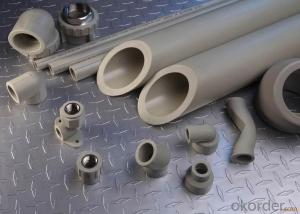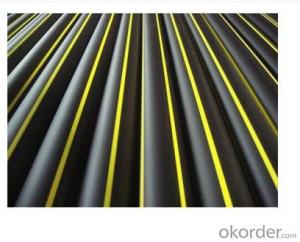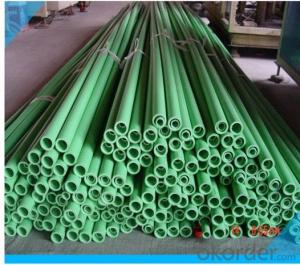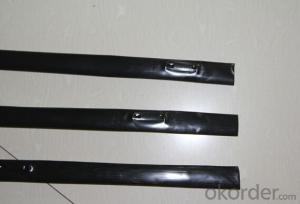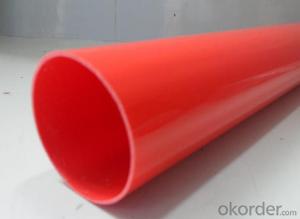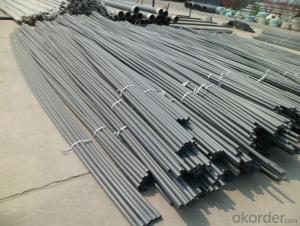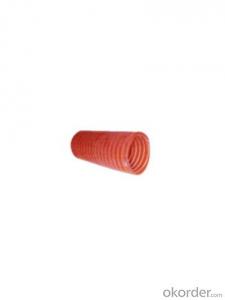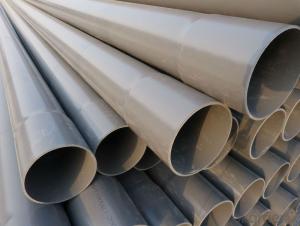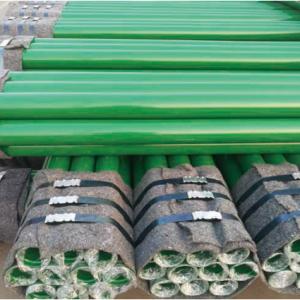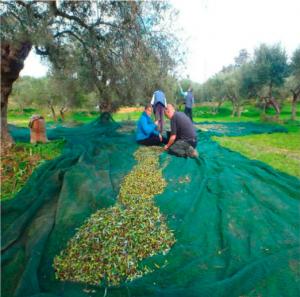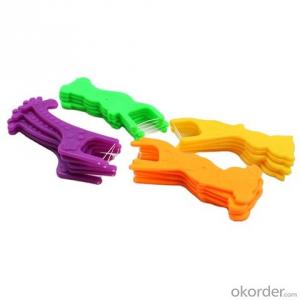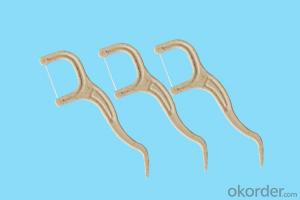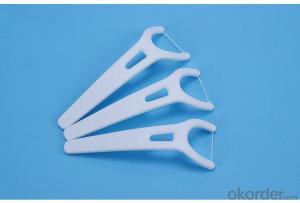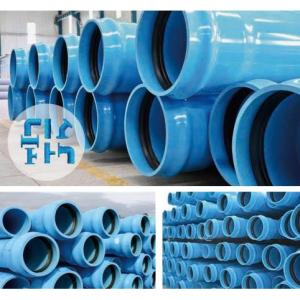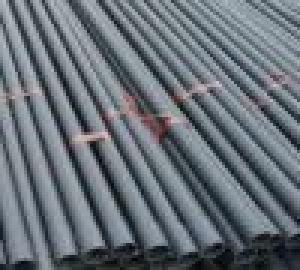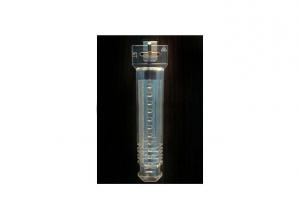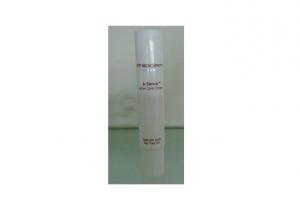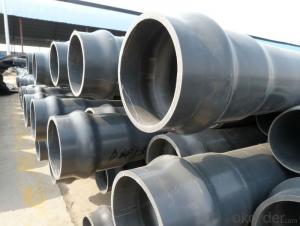large diameter steel reinforced corrugated polyethylene pipe
- Loading Port:
- Qingdao
- Payment Terms:
- TT OR LC
- Min Order Qty:
- 2000 m
- Supply Capability:
- 50000 m/month
OKorder Service Pledge
OKorder Financial Service
You Might Also Like
Steel reinforced corrugated polyethylene pipe is a new kind of corrugate pipe taken HDPE as body with parietal layer spirally wound and hollow rib reinforced by lining steel strips. SSRCSP owns unparallel advantages compared with traditional metal and concrete pipes,owing to the adoption of ring hollow structure wond with reinforcement made of steel strips, it owns the characteristics of high ring stiffness(8~16 Kn/m2),high strength and toughness,high pressure resistance and anti.sedimentation, light weight, impact and water sourcing resistance, high quake and freeze proof, breakage and leakage resistance, easy installation,long service life (50 years under normal usage conditions)and non-secondary pollution etc, besides the common characteristics of corrosion resistance, smooth wall and small flow resistance etc as the ordinary plastic pipes own, therefore, it’s widely used drainage, sewage, agricultural irrigation, mine ventilation, chemicals, telecommunications cablesheathing and other fields.Owing to light weight and safe and convenient transport and installation without using large equipments,it could reduce the labor intensity of contruction personnel and decrease the construction investment and it is the ideal replacement of Concrete pipe and ordinary plastic pipe.
Steel Reinforced Corrugated Polyethylene Pipe Characteristics:
1.High corrosion resistance and acid and alkali-resistance;
2.High ring stiffness,light weight and easy installation and construction;
3.High reliablity owing to seamless connection between inner wall bymeltingplastic;
4.Various connections could be choosed, simple and easy operation.
Physical Properties Table of Steel Reinforced Corrugated Polyethylene Pipe
| Items | Index | Test method | |
| Ring stiffness | SN8 | ≥8 | GB/T9674-2003 |
| SN12.5 | ≥12.5 | ||
| SN16 | ≥16 | ||
| Impact properties | TIR≤10% | GB/T14152 | |
| Peel strength(20°C±5°C)/N/cm | ≥70 | ||
| The ring flexibility | No rupture, no wall off | GB/T9647 | |
| Oven test | No stratification, no cracking | ||
| Tensile strength(N) of Polyethlene Connection Interface | ≥1460 | GN/T8804 | |
| Creep rate | ≤2 | GB/T18042 | |
Steel Reinforced Corrugated Polyethylene Pipe Sizes and Specification:
Norminal Ring Stiffness: SN4 SN8 SN12.5
Sizes: DN500mm-DN2200mm
| DN/ID | Average min inner diameter (dim.min) | The minimum thickness (emin) |
| 300 | 294 | 2.5 |
| 400 | 392 | 3 |
| 500 | 490 | 5 |
| 600 | 588 | 6 |
| 700 | 673 | 6 |
| 800 | 785 | 6.5 |
| 900 | 885 | 7 |
| 1000 | 985 | 7 |
| 1100 | 1085 | 7 |
| 1200 | 1185 | 7 |
| 1300 | 1285 | 7 |
| 1400 | 1385 | 7 |
| 1500 | 1485 | 7 |
| 1600 | 1585 | 7 |
| 1800 | 1785 | 7 |
| 2000 | 1985 | 8 |
| 2200 | 2185 | 8 |
Steel Reinforced Corrugated Polyethylene Pipe Fields of Application:
1.Agricultural Irrigation: used as deep-well pipe, strainer pipe,culvert pipe, drainage pipe or irrigation pipe etc.
2.Municipal Engineering: blow-off line,fire fighting pipeline,water supply, backwater, natural gas pipeline, etc.
3.Chemical Engineering: Discharge pipeline for corrosive gases, liquid, dust in industries of Acid, Alkali, salt manufacturing , Petro-chemical, chemical fertilizer, pharmaceutical, plastic, etc.
4.Oil-gas Field: pipeline for gathering oily sewage, gas-oil mixture, as well as secondary and tertiary oil recovery.
5.Thermal-electricity Engineering: pipeline for industrial water supply, backwater, conveyance of industrial waste residue, etc.
6.Metallurgy and mine: conveyance of corrosive medium, mining pulp, tailing and waste water during ferroalloy smelting; pipeline of conveying Coal Methane and water.
7.Highway construction: drainpipe and cable duct tube.
8.Ocean engineering: conveyance of sea water, offshore pipeline, cable/ optical cable duct tube.
9.Shipbuilding: ship pipeline, ballasting pipe, vent-pipe.
- Q:How do plastic tubes compare to nylon tubes in terms of strength?
- In terms of strength, plastic tubes are generally stronger than nylon tubes. Plastic tubes are often made from materials like PVC or polyethylene, which provide higher strength and durability compared to nylon tubes. However, the specific strength of a tube can vary depending on its thickness, manufacturing process, and intended use.
- Q:Can a plastic pipe be evacuated into a vacuum?
- Vacuum, of course, but does not guarantee how long the vacuum can be maintained.
- Q:Are plastic tubes suitable for pneumatic conveying systems?
- Yes, plastic tubes are suitable for pneumatic conveying systems. They offer several advantages such as being lightweight, corrosion-resistant, and easy to install. Plastic tubes also have good flexibility, allowing them to navigate bends and curves more easily. Additionally, they are cost-effective and can handle a wide range of materials, making them a popular choice for pneumatic conveying applications.
- Q:How do plastic tubes compare to polycarbonate tubes in terms of impact resistance?
- Polycarbonate tubes have higher impact resistance compared to plastic tubes.
- Q:UPVC what material is the pipe and the HDPE plastic pipe?
- It is not suitable for hot water transportation. The adhesion of the joint is high and the curing time is long. HDPE light quality, better fatigue strength, better temperature resistance, good toughness, flexibility, welding needs electricity, but mechanical connection parts are more expensive.
- Q:Can plastic tubes be used for fuel lines?
- Yes, plastic tubes can be used for fuel lines.
- Q:I adopted two new gerbils yesterday, and they are pretty well adapted so far. They live in an aquarium with a connected bin which is much larger and hold many things to chew on tons of bedding to dig in. These are two of the things they like best. Unfortunately, despite having tons of things to chew on including paper towels, wood blocks (which they don't find the least bit interesting), and cardboard (which is their favorite thing to chew on), one of my gerbils still resorts to chewing on the inside of the plastic tubes connecting the bin to the aquarium. Any ideas on how to stop it? I can't connect them any other way, and the only way they would get to the bin other than the tubes, would be for me to manually place them there (they don't trust me completely yet, but they are curious and have come up and sniffed, walked on my hand). Trying to catch them makes feel like a I'm stressing them out, and making them scared of me. What should I do?
- Hi :) Unfortunately there's not much you can really do to stop your gerbils chewing the tube. Unfortunately gerbils tend to chew everything they're not supposed to and ignore everything you buy them to chew on. I'm assuming the tube is plastic. Plastic is irresistible to gerbils, they love it, but its not good for their stomachs if swallowed. The only thing I can think of is if there's any possible way you can make, or find a new tube out of metal or glass. It seems to be the only thing gerbils can't get through!
- Q:What is the average lifespan of plastic tubes?
- The average lifespan of plastic tubes can vary depending on factors such as the type of plastic used, the conditions they are exposed to, and their usage. However, with proper care and maintenance, plastic tubes can typically last for several years to decades.
- Q:i have to know, because otherwise the hoover is rendered completely useless, the bottle cap is the same size as the hoover tube and i do not have a stick or long object long enough with which to poke it out :(please help me
- If the part of the tube where the cap is lodged is all metal for 8-10 inches in either direction, try heating it up. Position the tube on the reverse port, leave the vacuum off, then heat the tube to the point of weakening and distorting the cap. Then turn it on and blast that sucker out. WARNING: This method may very likely destroy your hoover!
- Q:What are the different types of plastic tubes?
- There are several types of plastic tubes, including PVC tubes, polyethylene tubes, polycarbonate tubes, acrylic tubes, and nylon tubes. These tubes vary in their composition, properties, and applications, making them suitable for a wide range of industries such as construction, plumbing, automotive, and medical.
1. Manufacturer Overview |
|
|---|---|
| Location | |
| Year Established | |
| Annual Output Value | |
| Main Markets | |
| Company Certifications | |
2. Manufacturer Certificates |
|
|---|---|
| a) Certification Name | |
| Range | |
| Reference | |
| Validity Period | |
3. Manufacturer Capability |
|
|---|---|
| a)Trade Capacity | |
| Nearest Port | |
| Export Percentage | |
| No.of Employees in Trade Department | |
| Language Spoken: | |
| b)Factory Information | |
| Factory Size: | |
| No. of Production Lines | |
| Contract Manufacturing | |
| Product Price Range | |
Send your message to us
large diameter steel reinforced corrugated polyethylene pipe
- Loading Port:
- Qingdao
- Payment Terms:
- TT OR LC
- Min Order Qty:
- 2000 m
- Supply Capability:
- 50000 m/month
OKorder Service Pledge
OKorder Financial Service
Similar products
New products
Hot products
Related keywords







